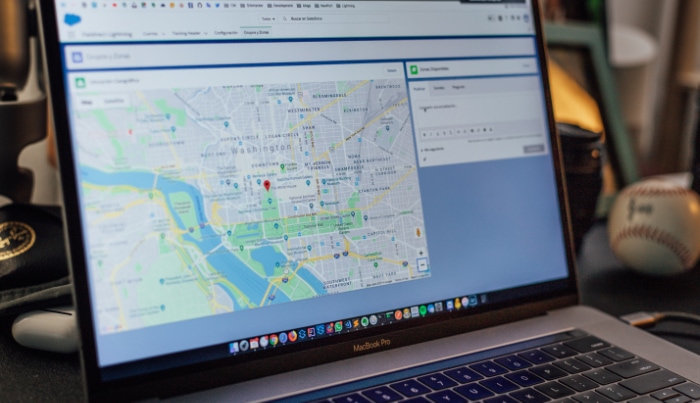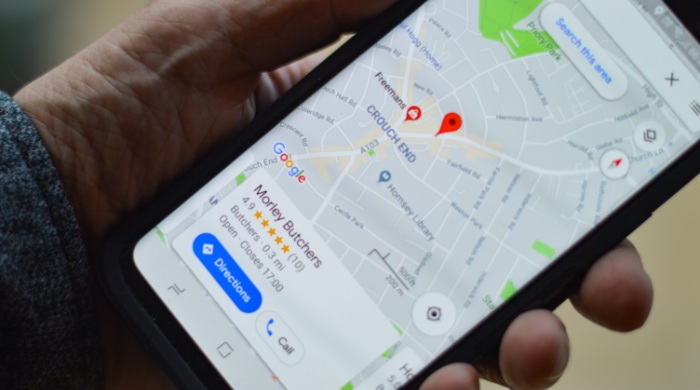What Is Geofencing Marketing? What You Need to Know
From budding startups to multinationals, geofencing has been an effective tool to ensure that the audience is reached in a relevant way to the company and increases the chances of you hitting your target market.
But what is geofencing marketing, and how does one traverse its many complications?
What Is Geofencing Marketing?
Geofencing is short for geographical fencing and is a type of location-based marketing. This tactic lets you place a digital fence around a geographic area and enables you to connect with people entering the area’s boundaries.
This is achieved via different technologies, like Wi-Fi, Bluetooth, GPS, and RFID.
How Does Geofencing Work?
What happens is that you place a geofence around a specific location, and any users entering that location will be added to a database. You can then send ads directly to that user.
These fences can be placed around almost any location, and this is especially useful if you’re looking to build or improve upon your potential customer base.
For example, you can place a geofence around your competitor’s location, and any users entering that area might get a notification advertising your business to them. This could be in the form of an SMS, a push notification, or other forms of communication.
Different types of locations that you can target include:
- Your premises
- Competitor locations
- Any events
- Areas with high footfall
- Institutes or universities
- Certain streets and stores
This is just an idea of the areas that geofencing can reach, and there is a lot of potential in scoping out different areas in desired locations to flesh out segments of the target market.
Is Geofencing Beneficial?
Now that you have a basic understanding of geofencing, let’s talk about the benefits.
Improving Customer Retention
Retaining customers is much cheaper than trying to earn new ones. Geofencing allows you to target users entering your business’s premises, ensuring that there will be a high percentage of your message being attended to.
Market Analysis
Geofencing marketing heavily influences analytics. By gaining data related to user information like ad impressions, views, conversion percentage, etc., you can pinpoint any issues in your marketing campaign.
For example, running an ad in a specific area during office hours might not net you as many views. This might indicate that users usually do not visit this area during office hours.
Increasing Customer Base
Targeting user hotspots with high footfall in designated areas will ensure that your message gets across to the right people. This is great for when you’re looking to target areas with a high chance of reaching your desired audience.
For example, targeting competitor locations with offers and promotions might entice users to try your product/service, after which you can start applying customer retention tactics.
Opportunity to Test Different Marketing Tactics
By trying out different strategies on the users, you can then identify which strategies are most effective, thereby saving experimental costs in the long run.
For example, users might respond better to an SMS offering them a voucher or a complimentary service.
Geofencing Tips
What are some effective strategies when you’re trying to conduct geofencing marketing?
Research Is the Key
Understanding your audience is the first step towards successful brand activation. If you know your target user persona, you can target areas that this audience is likely to frequent.
Research related to target audience is usually conducted via social media, SEO research tactics, and surveys. You can check what users are talking about and analyze how your brand might be relevant to them.
Surveys will help you understand the target audience’s demographic factors, and you can use this to your advantage.
For example, a rich, middle-aged couple might like to visit high-end restaurants on weekends frequently. If your restaurant is trying to increase revenue, you might place a geofence around the restaurant they are likely to visit, ensuring that they are notified about your latest offers.
Place a Call-to-Action in Your Notifications
A call-to-action, or CTA, is implementing a feature that allows the user to be redirected to your page or place an order.
By placing a CTA in the message you send, you make it more convenient for potential customers to browse and buy your product.
CTA buttons had a 28 percent higher click-through rate than link-based CTAs, according to CampaignMonitor. CTAs that looked like buttons also resulted in a 45 percent increase in clicks, according to Copyblogger.
However, remember that you’re not trying to spam customers but rather trying to invite them to try out your product.
Geofencing is much more effective when you’re introducing some new information about your brand, instead of just sending generic ads like “Buy one, get one free!” offers.
Regularly Review the Data
Market research is bound to fail if you’re not reviewing and analyzing the data you collect. By studying the different types of data you collect, you might detect specific patterns or unique user attributes that will help you improve your user experience.
If you notice that many users visit your website through the CTA in your push notification but do not place an order, there might be an issue with the web page.
Google Analytics helps you understand what pages are being viewed the most and what users do when they land on your website. This will help identify and remove any potential issues that might reduce conversions.
Geofencing and SEO
A successful SEO strategy includes working on the users that are trickling onto your web page, the relevance of your ad, and the user experience on your web page. SEO will help target the customers who are visiting the required locations, increasing the chances of click-through rate.
Ranking on different keywords is also improved when users search for your advertised brand when they’re looking for anything online.
This will also improve your ad score, which will reduce costs when you’re running ads.
Google’s algorithm tries to promote relevant and helpful sites, which can only be achieved by sharing interesting and attractive content with an audience that is highly likely to interact with that web page, thereby arriving on your landing page or searching specifically for your brand name.
Conclusion
Hopefully, by now, you’ll understand how geofencing works and some effective strategies to reach and maintain your desired audience. Remember that is a part of marketing, and successful marketing requires a joint effort from different media forms to be successful.
Geofencing can become an integral part of your marketing strategy since it has a high chance of bringing up qualified leads. This will also improve your ROI since you’re not wasting money targeting an audience outside of your target market.
Competing against rivals in a dynamic environment will require this strategy and many others. SEO strategies involve all the different parts of digital marketing, and businesses can’t survive on just one.




